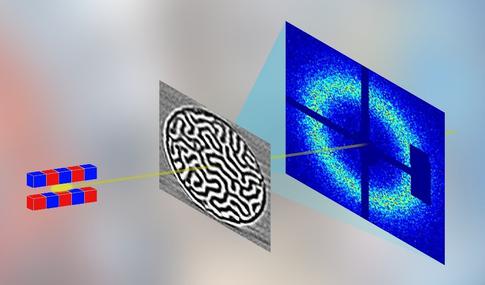XFEL: New simulation tool opens path to superfast electronic switches
New simulation tool opens path to superfast electronic switches
Electronic devices operate at speeds limited by the physical processes underlying their operation: the faster the process, the quicker the information processing speed. One such fast process that might lead to the development of superfast magnetic switches is the demagnetisation of layered magnetic materials (multilayered ferromagnets) when hit by ultrafast X-ray laser pulses. This process has been poorly understood to date, but now a joint research project by European XFEL and the Institute of Nuclear Physics of the Polish Academy of Sciences (IFJ PAN) has developed a new simulation tool, taking an important step towards superfast electronics.
“In recent years, physicists have become quite familiar with demagnetisation processes initiated by visible or near-infrared light. However, when it comes to the impact of more energetic X-ray radiation, we are all just taking the first steps,” says Beata Ziaja-Motyka, initiator of the research project. “Our team's contribution lies in the construction of a theoretical model called XSPIN. With its help, it is possible for the first time to simulate demagnetisation in multilayered ferromagnetic materials exposed to femtosecond pulses of light from an X-ray laser.”
XSPIN was reported in npj Computational Materials and allows for accurate simulations of the process of X-ray-induced demagnetization. The simulation models the process of hitting a sample of material with an X-ray pulse from European XFEL, and then looking at the resulting diffraction pattern to examine how magnetised the material is. The simulation was verified using data from FERMI FEL in Trieste, Italy.

“Understanding these processes could open the door to a new world of ultrafast nanoelectronics and better digital devices, but also to improved computer memory,” says Professor Serguei Molodtsov, scientific director of European XFEL. “We are pleased to have developed this robust tool, an important step towards progressing this fascinating field.”
Publication
"Modeling of ultrafast X-ray induced magnetization dynamics in magnetic multilayer systems”, K. J. Kapcia, V. Tkachenko, F. Capotondi, A. Lichtenstein, S. Molodtsov, L. Müller, A. Philippi-Kobs, P. Piekarz, B. Ziaja; npj Computational Materials 8, 212 (2022); https://doi.org/10.1038/s41524-022-00895-4
Scientific Contact
Serguei Molodtsov
Tel: +49-40-8998-5779
E-mail: serguei.molodtsov@xfel.eu
Press Contact
Bernd Ebeling
Tel: +49-40-8998-6921
E-mail: bernd.ebeling@xfel.eu
